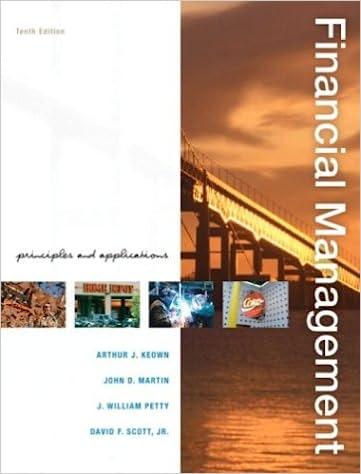Excel Activity: Bond Valuation Clifford Clerk is a recent retiree who is interested in investing some of his savings in carporate bends. His financial planner has suggested the following bonds: Bond A has a 7% annual coupon, matures in 12 years, and has a $1,000 face value. Bond b has an 8% annual coupon, matures in 12 years, and has a $1,000 face value. Bend C has a 6% annual coupon, matures in 12 years, and has a $1,000 face value. Each bond has a yleid to maturity of 7%. The data has been collected in the Microsoft Excel file below. Download the spreadsheet and perform the required analysis to answer the questions below. Do not round intermediate calculations. Use a minus sign to enter negative values, if any, If an answer is zero, enter "o". Downiosed toreadsheet. Bond yatuation-f6ghfcuisa a. Before calculating the prices of the bonds, indicate whether each bond is trading at a premium, at a discount, or at par. Bond A is selling at because its coupon rate is the going interest rate. Bond B is seliling at because its coupon rate is 3. the going interest rate. Gond C is selling at because its coupon rate is the going interest rate. b. Caiculate the price of each of the three bonds. Round your answers to the nearest cent. Price (Bond A): 5 c. Calculste the current yield for each of the three bonds. (Mint: The expected current yleld is calculated as the annual interest divided by the price of the bond.) Round your answers to two decimal pinces. Current yleld (Bond A): Current yield (Bond B): Current yield (Bond C): d. If the yieid to maturity for each bond remains at 7 wh, what will be the price of each bond 1 year from now? Round your answers to the nearest cent. Price ( Bond A) is Price (Bond 8):$ Price (Bond C): 5 What is the expected copital gains yieid for each bond? What is the expected total feturn for each bond? Round your answers to two decimal places. e. Mr. Ciark is considering another bond, Bond D. It has a 9% semiannual coupon and a 51,000 face value (h.e., le pays a $45 coupon every. 6 months). Bond D is scheduled to mature in 9 years and has a price of $1,150. It is also callable in 6 years at a call price of $1,080. 1. What is the bond's nominal yield to maturity? Round your answer to two decimal places. 2. What is the bond's nominal yield to cal? Round your answer to two decimal places. Which of the following borids has the most price risk? Which has the most reinvestment risk? - A 1+year bond with a 7w annual coupon - A 5 -year bond with a 7% annual coupon - A 5 -year bond with al zero coupon - A 10 -year bond with a 7 th annual coupon - A 10 -year bond with a rero coupon A. has the most price risk. A has the most reinvestment risk. 9. Calculate the price of each bond (A,B, and C) at the end of each year until maturity, assuming interest rates remain constant. Round your answers to the nearest cent. 1. What is the expected current yield for each bond in each year? Round your answers to two decimal places. 2. What is the expected cepital gains yieid for each bond in each year? Round your answers to two decimal places. 2. What is the expected capital gains yield for each bond in each year? Round your answers to two decimal places. 3. What is the total return for each bond in each year? Round your answers to two decimal places. 3. What is the total return for each bond in each year? Round your answers to two decimal places












